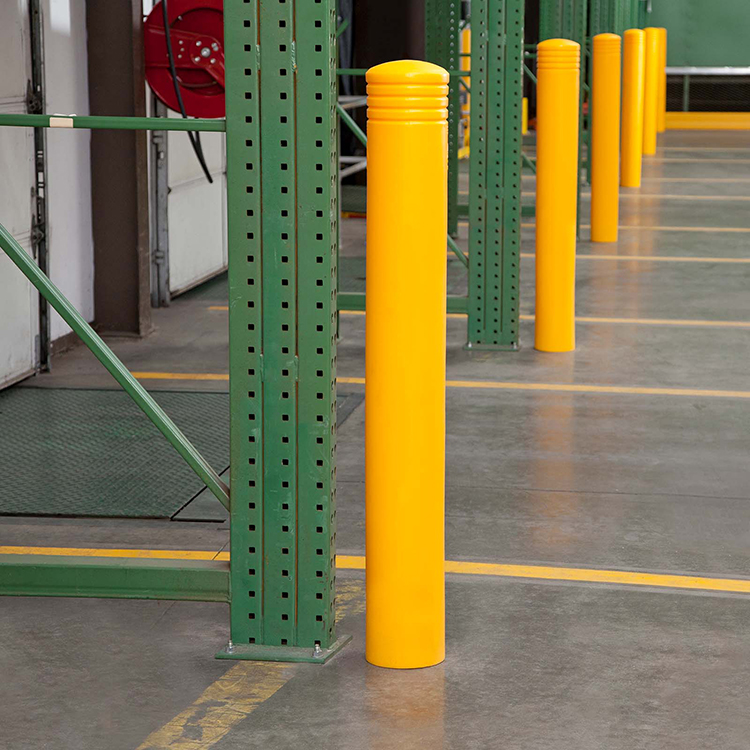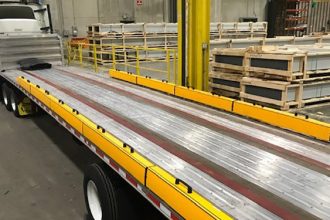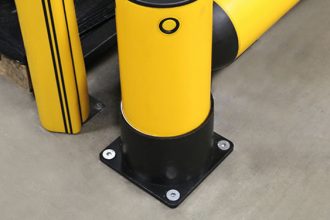When Are Bollards An Ideal Protective Guarding Solution?
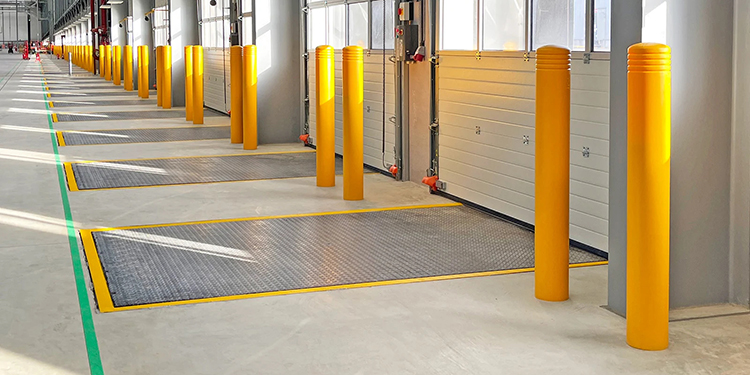
As one of many different types of barriers offered by the members of the Protective Guarding Manufacturers Association (ProGMA), it may not always be obvious when to use bollards over other equipment. In certain applications, bollards might be used interchangeably with column protectors, dock door protection, industrial facility protection guardrail, industrial pedestrian guardrail, or machine guarding. There are, however, a few situations when bollards are the ideal protective guarding solution.
Bollards Protect Targeted Areas
Because bollards are single, individual posts anchored to the floor or ground without any crossbar connections to other posts, they are ideal for highly targeted protection needs. These include a single rack leg in a higher traffic zone, suggested Tom Ustach, Chief Innovation Officer at McCue Corporation, a ProGMA member company.
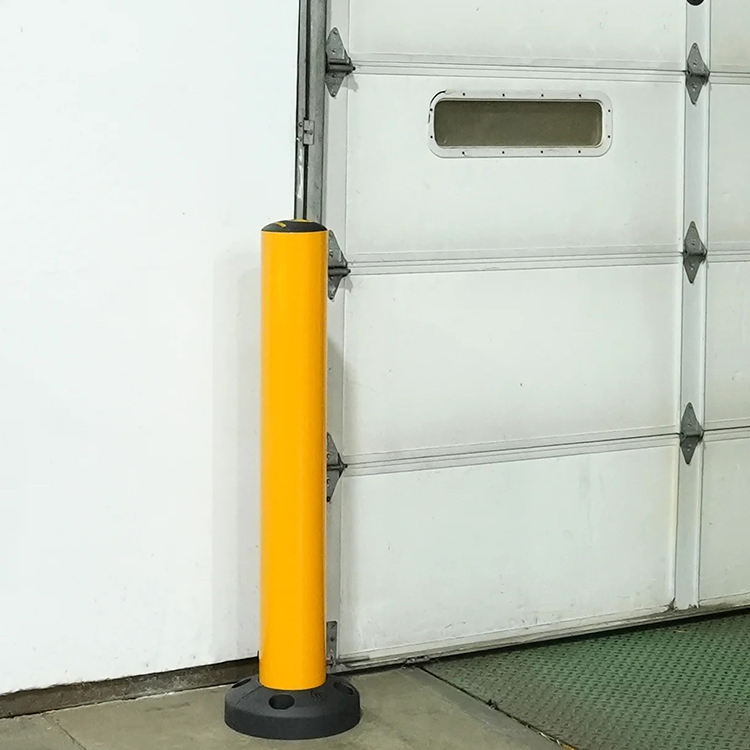
“Likewise, a single bollard could protect a vulnerable facility corner or structural column, or a dock door track,” he said. “If it’s an area that doesn’t need a wide span of continuous coverage—either at ground level or overhead—a bollard can be a good choice.”
Zones Where People Need Easy Access
Likewise, because of their singular nature, bollards create protection against impacts without obstructing necessary access. That is, they protect equipment, machinery, and control panels, for example. They also shield areas where personnel need easy access without the need to walk around a spanned barrier or the integration of safety gates.
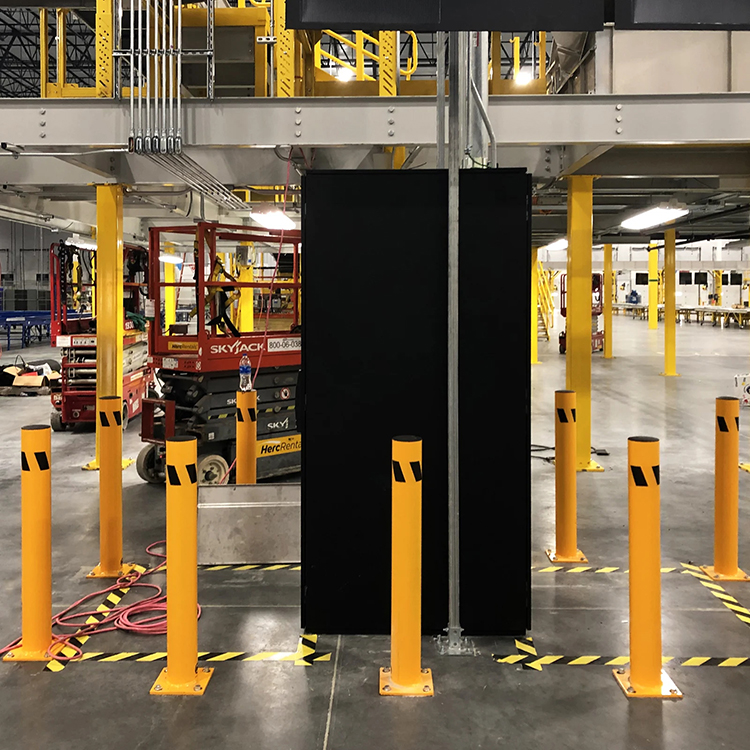
“For example, bollards are a great solution to protect personnel working in an area where they need to walk back and forth to conveyors, such as workstations for pick consolidation,” Ustach noted. “Or a scenario at the dock where associates push carts of outbound shipments to load last-mile delivery vehicles. They need easy access in and out of the area, but also need protection against forklift impacts.”
When Buyers Request Specific Testing Compliance
Currently, there are many testing standards available to verify the impact resistance of different types of bollard designs and materials, said Ustach. “If an application has very specific requirements or strength ratings for their barrier, we might lean toward using a bollard because more testing standards exist.”
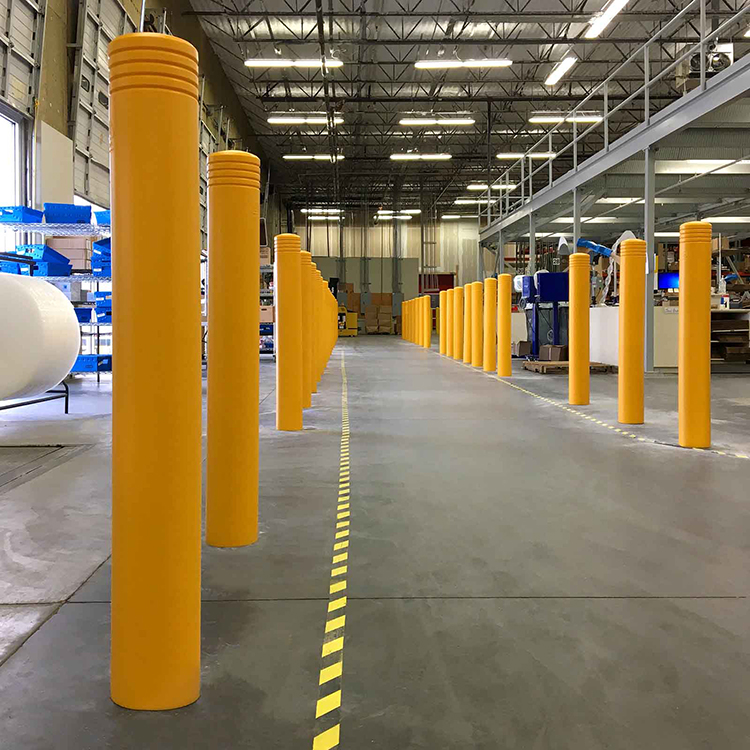
Ustach noted that ProGMA recently released the first ever standardized crash testing methodology for industrial guardrails and barriers, ANSI MH31.2. “This testing standard was long overdue in the industry, which is why ProGMA members insisted on its development,” he explained. “However, because bollard testing standards have been around longer, some facilities will specify bollards as the barrier to conform to for their application.”
Bollards Protect Against Variable Impact Sources
Spanned guarding devices, such as guardrails, are generally ideal for indoor protection against material handling equipment. That’s because vehicles like forklifts typically have uniform contact points, noted Ustach.
“Traffic patterns and vehicles inside warehouses, distribution centers, and manufacturing facilities tend to be fairly constant in terms of speed, size, and weight,” he explained. “However, in applications where there’s a lot more variety—such as a parking lot—a bollard is likely the better solution.”
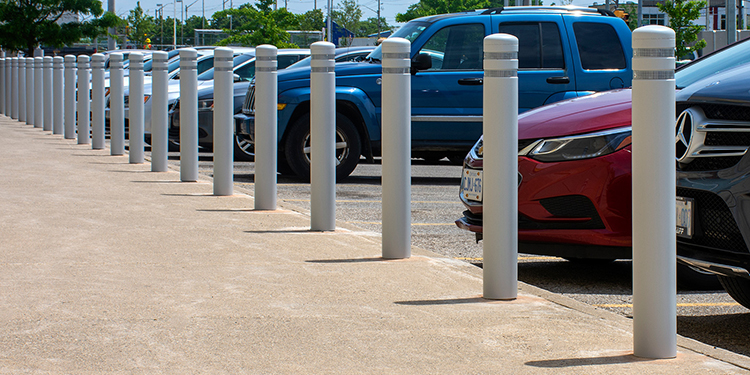
That’s because bollards come in variable heights. That allows them to stop a wide range of vehicle types (tractor-trailers, cars, motorcycles, box trucks, and delivery vans) with different bumper heights.
“They can also be spaced closely together to prevent a vehicle from passing between them,” said Ustach. “Typically you have fewer impact points along the span of a guardrail than you would a bollard.”
For additional guidance and recommendations on when bollards provide the optimal protection for an application, work with a qualified solutions supplier. A good place to start is with the members of the Protective Guarding Manufacturers Association (ProGMA).


